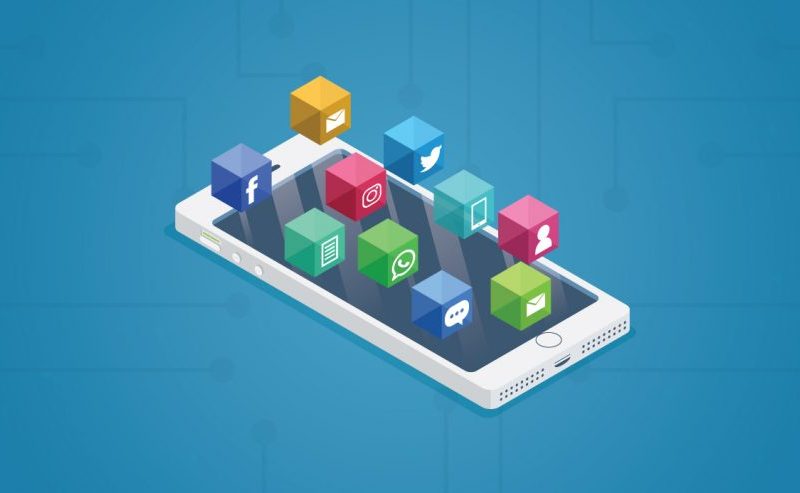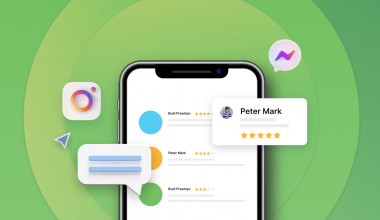Chat apps are used increasingly more and more in Indonesia. According to a research conducted on 1,400 participants in 2016, 37% of them use chat apps for more than 4 hours/day and the other 10% use them for 3-4 hours/day. This affects Indonesians not only in the way they communicate daily with their friends and family, but this also impacts the way businesses come in contact with their customers.
Conversational commerce, which according to Chris Messina is a method of assisting customers via live chat, is gaining more popularity in the country because it enables customers to be assisted directly by the company’s personnel, thereby improving satisfaction. This phenomenon has shifted the use of chat apps from just assisting day-to-day talks to becoming one of the must-have marketing channels that can spur the growth of businesses. It’s much easier and more personal for customers to have their complaints handled through chat apps rather than reaching out through traditional customer service channels such as the time-consuming email or credit-consuming phone calls.
This conversational commerce signifies how important proper customer service chat is to a company. Customers expect the company to accommodate to their various needs, from searching for their wanted items, bidding for prices and to even paying for their transactions, all in just one interface, which is in the customer service chat.
User experience in customer service chat, then, becomes a big concern, especially for companies that use multiple platforms for the service chat. Surely maintaining customer satisfaction also depends on what type of platform is used, considering each chat app has its own strengths and drawbacks.
What’s the deal with multichannel customer service?
By providing various customer service channels, customers can choose the channel that suits their needs the most. Yet, it’s not the only benefit that a multichannel customer service chat app can bring to a business. According to this article, with customer service chats, companies can also gather the customer feedback in written records, enabling them to revisit and reproduce these feedback as insightful data for business development.
Furthermore, letting the customer service agents to handle more than one channel of customer service can also bring out the best in them; in that they can handle more than one customer at a time (compared to phone-call customer service in which one agent can only handle one customer). Thus, they will learn multitasking and to quickly respond to issues. Gaining new soft skills, in turn, can improve the employees’ work satisfaction. Adding to that, the costs that a business can save by reducing customer service personnel managing phone calls means that multichannel customer service chat apps prove to be an effective customer service strategy that is worth trying.
If a company manages to score utmost satisfaction from all the different chat channels, the customers’ trust to their brand will thrive. As this study has found, 65% of buyers find a positive experience with a brand to be more influential than great advertising. This satisfaction will most probably translate into profits.
On the other hand, when different quality of service is provided in different chat service platforms, the customer experience may be inclined to be more negative since it sends a message of inconsistency to the customers. This will backfire and push the customers away instead. As research from Aberdeen Group has found, companies that provide consistent service quality across multiple channels retain 89% of their customers, whereas companies with inconsistent quality are only able to retain 33% of their customers.
Nevertheless, the profit that conversational commerce indirectly produces for the company is worth far more than the effort the company has to make to maintain the quality of their chat service.
Choosing the right technology to meet customers’ expectation
There is a risk in implementing multichannel customer service chats if the customer support team cannot deliver consistent quality of service in each platform. Customers who are satisfied with the customer service delivery of a channel will expect the other channels to deliver equally qualified customer service as well.
However, thanks to today’s technology, maintaining the quality of a business’ chat service in multiple channels is not that difficult anymore. There are many tools that companies can use to maximally harness the benefits of an integrated chat service. Qiscus, a local SDK chat provider, has just launched one of their products that can help businesses to integrate their customer service chat platforms, including Line, Telegram, Facebook Messenger, Whatsapp, and web live chat into one dashboard, making service management and monitoring easier for the customer support team.
Having all the platforms in one dashboard makes it easier to maintain and standardize the quality of each service chat, thereby ensuring equal satisfaction to each customer inquiry even when the platforms they use are different from each other.
At the end of the day, keeping a business afloat these days is not always about maintaining the product’s quality; outstanding customer service has been the more significant factor that will keep your customers coming back for more. In today’s era where multichannel customer service has become the norm, choosing the right technology to monitor consistent excellence across channels is key to maintaining utmost satisfaction in all users.



